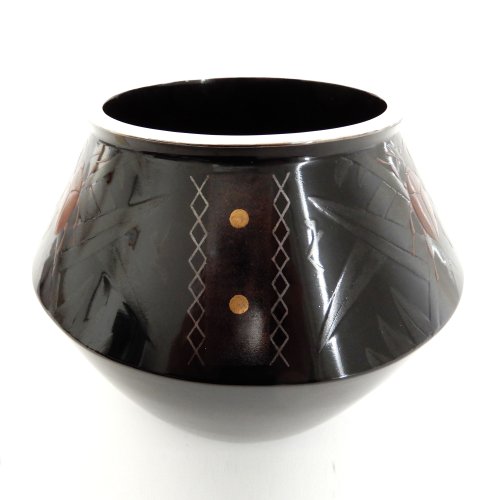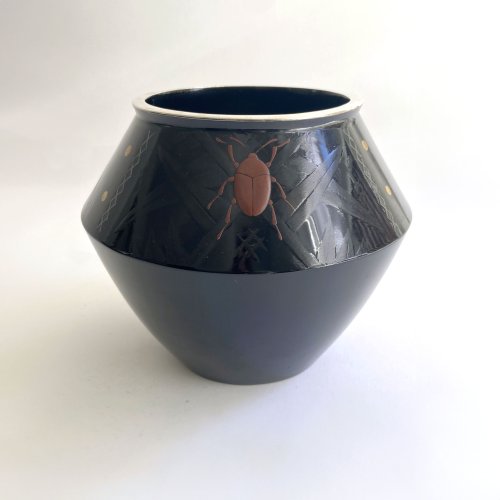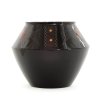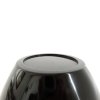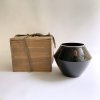Japanese art deco lacquervase with Scarab beetle motif
About this piece
Sometimes we come across something that doesn't directly fit into our collection but still resonates with it. This Japanese vase is a perfect example, and we found it to be a valuable addition to our collection.
The vase can be considered as Japanese Art Deco. Japan was also influenced by the Art Deco style through film, design, fashion, and more. Thus, Japanese artists began incorporating their own Art Deco elements into their designs. In the 1920s, after the discovery of the pharaohs' tombs, there was a worldwide Egyptian revival, also in Japan. Various Egyptian motifs, such as the scarab beetle, could be found in fashion, advertising campaigns, and applied art like this vase.
Officially, this period in Japan falls within the Showa era (1926-1989). The vase is made in the traditional manner with a wooden base, followed by several layers of lacquer. Various techniques were applied to achieve the vase's current appearance.
During that period, there was a very famous lacquer artist, Nishimura Hikobei VIII (1886-1965), who, as the 8th in his generation, wanted to secure his succession and founded a school in 1926, the Kyoto Maki-e Art School. To clarify, this vase is not signed by Nishmura Hikobei VIII, but it was likely made by one of his students. The solid silver neck rim, for example, is an element also found in vases made by this master.
The shape of the vase is unusual, and the maker used little silver and gold in the decoration, a technique called Maki-e, only in the gold dots and silver lattice edge of the decoration. The three large reddish-brown scarabs, in relief among the reeds, attract all the attention. Combined with the simple chic silver rim and the sleek design, this makes the vase so uniquely stylish and artistic in its simplicity, precisely what Art Deco stands for.
The vase comes from Tokyo, and amusingly, there was an old Japanese card for a social ceremony in Keito, Kyoto, in the accompanying box. The address no longer existed. It was an old card. The Kyoto Maki-e Art school was also located in old Kyoto
Literature:
In 2014, there was a major exhibition at the Seattle Art Museum about this unique stylistic period in Japanese culture, showcasing 'the Levenson Collection', a special collection focused on Japanese Art Deco
style within Japanese art and culture between 1920-1945.
Below the very well written and informative book cq catalogue.
- Kendall Brown, Takanami Machiko; 'Deco Japan, Shaping Art & Culture 1920-1945', Alexandria, Va. Art Services International, 2012.
Condition
Excellent
Material:
Wood, silver, lacquer
Measurements:
Height: 17 cm
(6,69")
Neck diameter: 13,5 cm
(5,31")
Foot diameter: 10,8 cm
(4,25")
Buikomtrek: 65 cm.
Period:
1920-1950
Origin:
Japan


